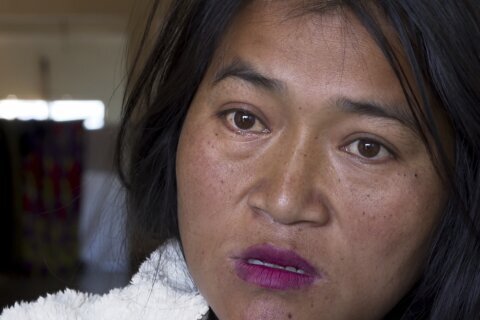The impact of sun exposure
If you’ve ever had a sunburn, you know the pain of too much sun exposure.
Anytime you’re outside, you’re exposed to ultraviolet light from the sun, and those UV rays can damage your skin, potentially leading to burns, rashes and skin cancer.
Some people may be more sensitive to the sun than others. They’re more likely to develop a sunburn or experience other consequences of too much solar radiation, such as photosensitivity, an extreme sensitivity to the sun.
Types of photosensitivity
There are two types of photosensitivity:
— Phototoxicity. These reactions look and feel like a severe sunburn and develop within a few hours of direct exposure to UV light. They’re usually associated with a specific food or medication you’re taking and are limited to sun-exposed areas, such as the face, neck or upper chest and shoulders. The severity is usually dependent on the length of exposure, and reactions can cause cellular damage.
— Photoallergy. These reactions look more like a rash than a regular sunburn and can include itchy patches and redness that may blister. They usually peak within 24 to 72 hours but can take much longer to fully resolve. They’re caused by the immune system responding to an exposure on the skin or ingestion of an allergen that induces an allergic reaction. These reactions can get progressively worse with each exposure.
Regardless of which type of photosensitivity you experience, there are many factors that can contribute to these reactions.
1. Skin type
Those with fair skin and lighter or red hair — less melanin, in other words — are more susceptible to damaging ultraviolet rays.
“Primarily, sun sensitivity is linked to the level of melanin pigmentation you were born with,” explains Dr. Mariano Busso, a board-certified dermatologist in private practice in Miami and Beverly Hills, California.
For those with darker complexions, however, “melanin acts like an umbrella over the cell nucleus, shading and protecting the DNA from the sun’s harmful radiation,” says Dr. Tanya Nino, a dermatologist and melanoma program director at the Center for Cancer Prevention and Treatment at Providence St. Joseph Hospital in Southern California.
But having darker skin doesn’t mean you’re fully protected from sunburns and skin cancer risk. Even people with the darkest skin tones can still develop sun sensitivity and burn if exposed to too much sun.
2. Medical conditions
Photosensitivity is more common in people with certain diseases.
“For autoimmune conditions, such as lupus and dermatomyositis, sun exposure can make the skin develop more redness, irritation and, in some cases, scarring,” explains Dr. Susan Massick, a board-certified dermatologist and associate professor of dermatology at the Ohio State University Wexner Medical Center in Columbus.
Other conditions that can cause severe sun sensitivity include:
— Rosacea. This common medical condition causes redness, flushing and acne-like breakouts on the face that sun exposure can exacerbate, notes Dr. Brian R. Toy, a board-certified dermatologist with Providence Mission Hospital and a clinical professor in the school of medicine at the University of Southern California.
— Xeroderma pigmentosum. This rare disease is caused by a genetic defect in the enzymes involved in repairing damaged DNA, and it causes severe photosensitivity. Accumulated sun exposure can also lead to early onset of aggressive types of cancer, Massick adds.
— Basal cell nevus syndrome. This rare inherited disorder can affect a range of body systems, in addition to causing pits in the palms and soles and a high likelihood of developing basal cell skin cancer.
— Porphyria. This liver disease results in the accumulation of porphyrins, pigments that are involved in the production of hemoglobin.
— Sun allergies. Polymorphous light eruption, actinic prurigo and solar urticaria are all conditions in which sun radiation causes changes in the skin that the immune system responds to, triggering a rash.
People with these conditions must be careful when they head outside because their risk of cancer can be very high in some cases. But this isn’t always easy to do.
“You can’t completely avoid the sun all the time,” Massick says. “The focus is on minimizing sun exposure, being smart about when it’s safe to be outdoors and being consistent with sun protection.”
3. Medications
Certain medications can make it far more likely that you’ll burn when exposed to sunlight.
“Medication is absorbed into the skin, either from topical or oral use,” Nino explains. “These foreign molecules absorb a greater degree of ultraviolet radiation, thereby causing damage to skin cells and resulting in a sunburn.”
Drugs that are known to increase sun sensitivity include:
— Antibiotics, including drugs in the tetracycline family (doxycycline, tetracycline, minocycline, demeclocycline), fluoroquinolones (ciprofloxacin, levofloxacin, norfloxacin) and sulfonamides, or sulfa drugs, such as sulfamethoxazole, sulfadiazine, sulfisoxazole and sulfinpyrazone
— Nonsteroidal anti-inflammatory drugs, such as ibuprofen, ketoprofen and naproxen
— Antihistamines, such as diphenhydramine (Benadryl), cetirizine (Zyrtec) or loratadine (Claritin)
— Diuretics, including hydrochlorothiazide and furosemide, which may be used to treat high blood pressure, edema, heart failure and other conditions where fluid accumulation is an issue
— Hormones, such as estrogen, progesterone and their derivatives. These include oral contraceptives and postmenopausal hormone replacement therapies.
— Systemic retinoids, such as isotretinoin, which may be used to treat cystic acne. Examples of this medication include tretinoin (Retin-A), adapalene (Differin) and tazarotene (Tazorac).
— Phenothiazines, such as prochlorperazine, chlorpromazine, promethazine, thioridazine and trifluoperazine. These medications are used as antipsychotics in the treatment of certain mental health disorders.
— Cancer immunotherapies, such as vemurafenib, which is used to treat some skin cancers
— Oral diabetes drugs, such as sulfonylureas and metformin
— Oral hypoglycemics, such as glipizide, glyburide and chlorpropamide
— Tricyclic antidepressants, such as amitriptyline, nortriptyline, doxepin, desipramine and imipramine
— Topical treatments for psoriasis, such as Neutrogena T/Gel shampoo, Denorex, DHS Tar Shampoo, Zetar shampoo and emulsions
— Herbal drugs, such as St. John’s wort, which is sometimes used to treat depression and anxiety
4. Certain foods
Consuming certain foods can increase sun sensitivity, as compounds within these foods can cause the skin to react more to the sun’s rays. Ones to watch out for include:
— Carrots
— Celery
— Fennel
— Figs
— Wild dill
— Wild parsley
— Wild parsnips
“In my practice, the No. 1 cause of phototoxicity is citrus,” Toy adds.
Often, he says, people will have squeezed limes or lemons, forgotten to wash their hands and then headed outside and exposed their hands to sunlight.
“The sun reacts with a chemical called furocoumarin that is present in the citrus residue,” Toy explains. “This results in a rash, which can range from mild redness to severe blisters. As the rash heals, it will oftentimes leave brown patches on the skin, which can take months to resolve.”
5. Perfumes and essential oils
Using perfumes or essential oils containing bergamot can also cause a reaction.
“Oil of bergamot is derived from citrus and contains a photosensitizing compound called bergapten,” Toy explains.
Musk and essential oils — like lavender, rosemary and sandalwood — can make your skin more reactive to the sun as well.
6. Skin care products
Skin care ingredients that can increase sun sensitivity include:
— Alpha-hydroxy acids (AHAs), such as glycolic acid and lactic acid
— Beta-hydroxy acids (BHAs), such as salicylic acid
— Retinoids, including over-the-counter retinol and prescription tretinoin
— Benzoyl peroxide
Each of these agents strips the outer layer of the skin, the stratum corneum, which reveals an underlying layer of skin that’s more sensitive to the sun.
For those who are sun sensitive, Toy recommends using a serum with vitamin C or hyaluronic acid instead.
Reactions aren’t universal.
Not everyone who takes a certain drug or uses a particular product will experience photosensitivity, notes Dr. D’Anne Kleinsmith, a board-certified dermatologist at Beaumont Hospital, Royal Oak, and the Midwest Center for Dermatology and Cosmetic Surgery in Farmington Hills, Michigan.
And even if you do have a photosensitive reaction on one occasion, that doesn’t guarantee it’ll happen again.
“These reactions are temporary and will resolve, but the key is to identify the culprit,” Massick says.
If you can’t figure out what’s causing it or can’t discontinue long-term medication use, then it’s important to minimize sun exposure and maximize sun protection.
Reduce sun exposure to limit sensitivity.
You can’t control all the factors that make you sensitive to the sun, but you can control how much sun exposure you get, which can reduce your chances of developing a sunburn or aging prematurely.
You should try to limit your exposure to the strongest rays of the sun, which shine down between 10 a.m. and 2 p.m. Kleinsmith also recommends completing outdoor activities in the early morning or the late afternoon.
Cover up.
Seek shade if you must be outside, but “be aware that ultraviolet light is reflected off surfaces, especially water, and this is strong enough to trigger a sun reaction,” Toy warns.
For that reason, covering up your skin with sun-protective clothing, a hat and sunglasses is usually best. Sun-protective clothing is rated by the ultraviolet protection factor, or UPF, system.
“It’s very similar to SPF (sun protection factor),” Toy explains. “In general, all fabrics provide some level of UPF, but darker colors and tightly woven fabrics score higher in UPF. But these can be very hot to wear. Clothing marketed as sun-protective typically employs proprietary fabrics to keep you cool even while covered up.”
Use plenty of high-quality sunscreen.
If you can’t cover up, slather on plenty of sunscreen.
For the best protection:
— Choose a water-resistant sunscreen that protects against the sun’s ultraviolet A (UVA) and ultraviolet B (UVB) rays and that’s non-comedogenic — meaning it won’t clog your pores.
— Avoid products that contain PABA (para-aminobenzoic acid), which can cause allergic reactions in some people.
— Look for the words “broad spectrum” and an SPF of 30 or greater. Broad spectrum refers to a product’s ability to protect against both UVA and UVB radiation.
— Opt for physical sunblock with zinc oxide or titanium dioxide. These products can be chalky and white when applied, but some contain iron pigments that tint it brown, Toy says.
— Choose creams and lotions over sprays because they can provide more coverage.
— Apply sunscreen every day 20 to 30 minutes before you go outside. Reapply it every 1.5 to 2 hours while you’re outdoors. If you’re swimming or sweating, reapply more frequently as no sunscreen product is fully waterproof.
— Use at least 1 ounce — about the volume of a shot glass — each time to cover your whole body. If you have the same bottle of sunscreen on Labor Day that you started with on Memorial Day, you definitely aren’t using enough.
You should use sunblock every day, even if you work indoors. The fairer your skin, the more frequently you should apply.
“Sun damage appears about 20 years later, so do your future self a favor and cover up,” notes Dr. Matthew Lomelí, a board-certified family physician and medical director of telehealth, patient access and the patient service center at Altamed Health Services in Southern California.
Consider a supplement.
For very sun-sensitive people who are headed outdoors, Kleinsmith recommends taking an oral antioxidant supplement like Heliocare in the morning.
This supplement contains an extract of Polypodium leucotomos, a tropical fern rich in antioxidant compounds that protect the skin from free radical damage. Other antioxidants, such as vitamin B6 and beta-carotene, may increase tolerance to UV rays.
While such supplements should never replace sunblock, they may add an extra bit of protection.
Top factors that make you more sensitive to the sun
— Skin type
— Medical conditions
— Medications
— Certain foods
— Perfumes and essential oils
— Skin care products
More from U.S. News
Can Eating Certain Foods Help You Tan?
Best Products for Summer Health Hazards
Surprising Factors That Increase Sun Sensitivity originally appeared on usnews.com
Update 06/24/24: This story was previously published at an earlier date and has been updated with new information.







